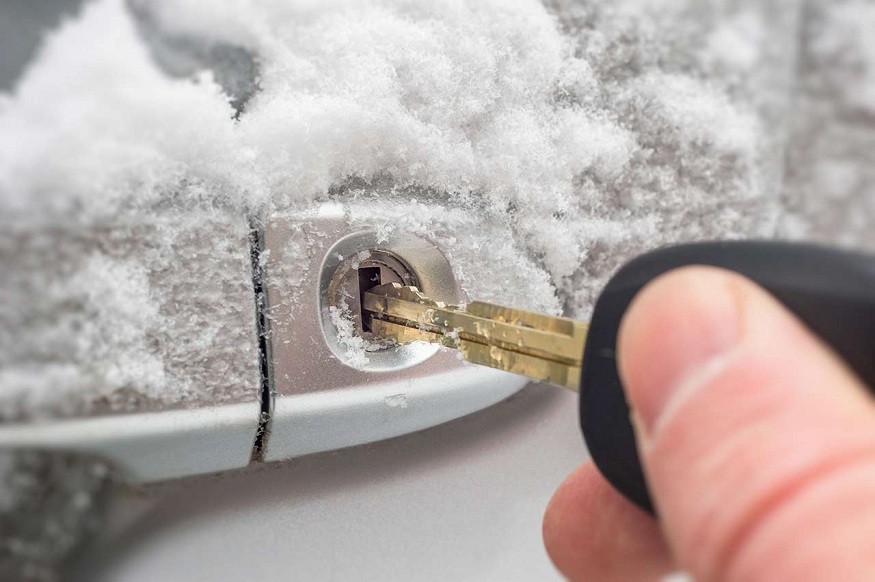To effectively unfreeze a lock, you can use one of the following products or tools:
De-icing spray : There are several types and brands. Specially designed for this purpose, car de-icers can remove frozen locks. Spray the product directly onto the lock, wait a few minutes, and try inserting the key again.
Once sprayed on the lock, wipe off any drips with a cloth, as this alcohol could damage the surfaces of your car.
Hair dryer : You may need to unwind a long extension cord to use your hair dryer, but this method is quite effective at melting the gel . Set the dryer to a medium temperature to prevent excessive heat from damaging the electronic components of your lock. This will also protect the door seals.
The editorial board
Since 2020 and the Covid outbreak, you’ve probably had a bottle of hand sanitizer in your bag! You can use this hand sanitizer to coat your key and then gently try to insert it into the lock, without using too much force. The alcohol in the product acts as a de-icer: a great quick and handy trick in case of an emergency.
Despite your best efforts, the lock is still completely frozen and you don’t know how to fix it? Call a mechanic or locksmith . This qualified professional can resolve the problem without damaging your vehicle. And remember to check if your car insurance policy covers this type of intervention.
What not to do
Faced with such an emergency situation, you might have bad reflexes. For example, pouring hot water on the lock would be rather tempting. And yet, the liquid will have difficulty making its way through to reach the lock’s watertight seals. By the time it gets there, and depending on the outside temperature, the hot water could freeze and worsen the situation . In addition, hot water risks damaging the electrical circuits of the locking system. You would then be forced to change the lock on your car, an often costly procedure if it is not covered by your insurance.
Read also
How to preserve your car in winter: 10 tips to follow
Forcing the lock with the key is also not a good idea, as the key could break inside the mechanism. And while you might think that heating the key beforehand with a lighter flame is a good solution, in practice this could not only damage the electronics, but also the key itself and its central opening and locking system.
How to prevent frozen car locks?
Preventative action remains the best solution to prevent ice from forming. For example, you can use a lubricating spray or antifreeze, or even glycerin and petroleum jelly. Brush the product onto your key and insert it into the lock for a few moments, allowing the lubricant to coat the walls. This creates a protective film that prevents ice from forming inside the mechanism. Take the opportunity to also apply some to the door seal: the rubber also deserves protection.
Good to know
Regular maintenance and checking of your car’s door seals, especially in winter, will prevent the locks and doors from freezing.
Another method is to place a protective cover over your car to protect it from the cold. This can save you from having to thaw the lock, door seals, and defrost the car in the early morning.
If you have a garage, parking your car inside is even more effective! It’s also a good way to prevent animals from hiding under cars , which they love to do when the cold weather returns.

